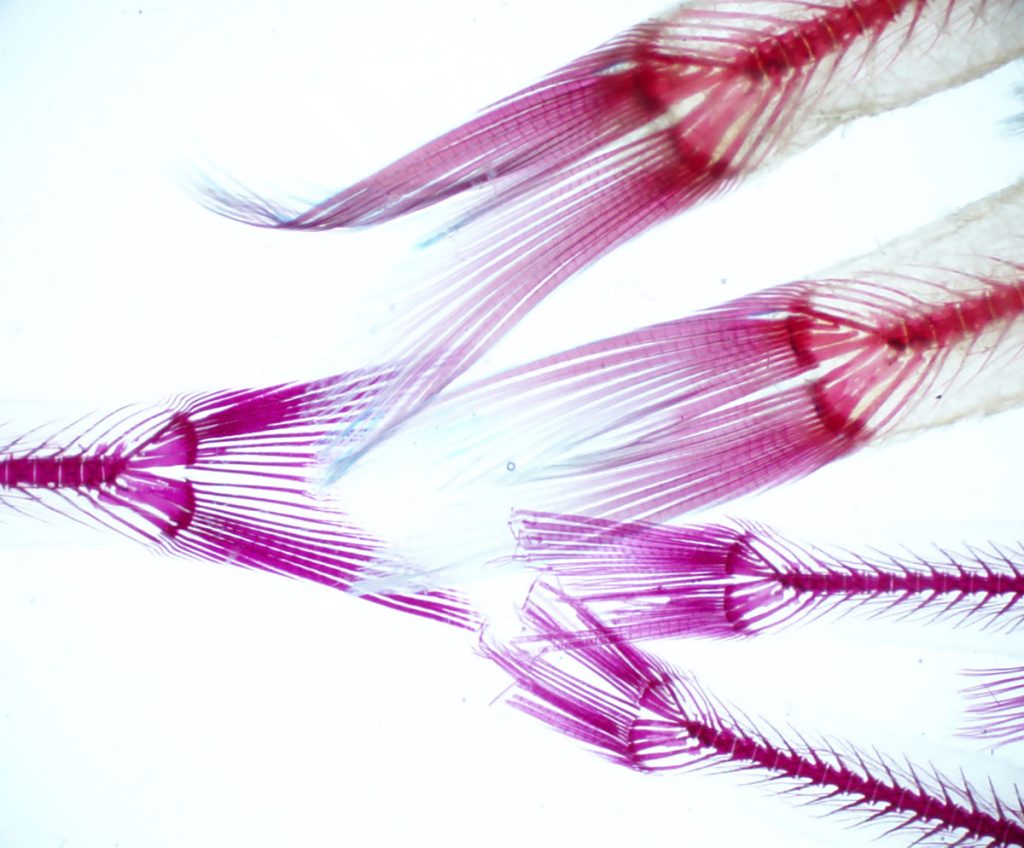Semi-finalist 2023
| Submitted by: | Erika Jessen |
| Department: | Biological Sciences |
| Faculty: | Science |
My research examines and compares osteological characteristics between different species and populations of Notropis. More commonly called ‘shiners,’ they are a genus of North American freshwater fishes. Small in size, many species appear superficially similar to one another. However, a complex story is revealed when the muscles are cleared away, the cartilage is stained blue, and the bones red.
This image shows the caudal skeletons of five cleared and stained Notropis specimens. On the left is an Emerald shiner (Notropis atherinoides) with the standard structure of a Notropis caudal skeleton. The last four vertebrae support the rays of the tail fin. The first three have a single neural and hemal spine on the top and bottom. A compound centrum at the end is encircled by an epural, uroneural, six hypurals and a parhypural.
Mirrored are four variants of this setup. The top two specimens of spottail shiners (N.hudsonius) show a fusion of the first hypural and parhypural in the bottom lobe. The caudal fin of the lower one is supported by three vertebrae, the first two having fused. The bottom two specimens are blackchin shiners (N.heterodon) with the epural of the top lobe absent or reduced and two neural spines sometimes found on the third vertebrae.
In other words, even the tails of shiners tell an ancient, ongoing tale of variation, adaptation, evolution and change.

